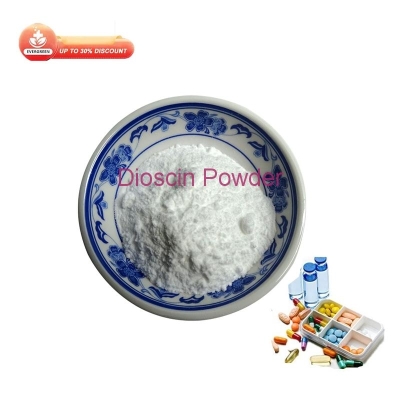-
Categories
-
Pharmaceutical Intermediates
-
Active Pharmaceutical Ingredients
-
Food Additives
- Industrial Coatings
- Agrochemicals
- Dyes and Pigments
- Surfactant
- Flavors and Fragrances
- Chemical Reagents
- Catalyst and Auxiliary
- Natural Products
- Inorganic Chemistry
-
Organic Chemistry
-
Biochemical Engineering
- Analytical Chemistry
- Cosmetic Ingredient
-
Pharmaceutical Intermediates
Promotion
ECHEMI Mall
Wholesale
Weekly Price
Exhibition
News
-
Trade Service
Actinomycin D is an antibiotic produced by certain strains of the bacterium Actinomyces viscosus.
It is commonly used to treat a variety of bacterial infections, and it has also been used in the treatment of some types of cancer.
The demand for actinomycin D has been growing in recent years, and this has led to an increased interest in the production and purification of this antibiotic.
In the chemical industry, upstream and downstream products refer to the various components of a manufacturing process, from the raw materials that are used to produce the final product, to the finished product itself.
In the case of actinomycin D, the upstream products are the raw materials that are used to produce the antibiotic, while the downstream products are the various forms of the antibiotic that are used in the treatment of bacterial infections and cancer.
The upstream products of actinomycin D include the various raw materials that are used in the production of the antibiotic.
These raw materials can include the bacteria that produce the antibiotic, as well as any precursors or intermediates that are used in the production process.
For example, the bacteria used to produce actinomycin D may be grown in a nutrient-rich medium, which would be considered an upstream product.
Similarly, any precursors or intermediates that are used to synthesize the antibiotic may also be considered upstream products.
The production of actinomycin D typically involves a fermentation process, in which the bacteria are grown in a suitable medium and the antibiotic is produced as a result.
In order to ensure that the fermentation process is as efficient as possible, the upstream products must be of high quality and must be carefully controlled.
This may involve the use of specialized equipment and processes, such as sterile fermentation tanks, to ensure that the bacteria are grown in a clean and protected environment.
It may also involve the use of nutrient-rich media and other growth factors to promote the growth of the bacteria and maximize the yield of actinomycin D.
Once the bacteria have been grown and the actinomycin D has been produced, the next step is to purify the antibiotic to remove any impurities and to increase the concentration of the active ingredient.
This process, known as purification, is a critical step in the production of actinomycin D, as it is essential to ensure that the final product is pure and potent.
There are a number of different techniques that can be used to purify actinomycin D, including chromatography and filtration.
These techniques are used to remove any contaminants or impurities from the antibiotic, and to increase the concentration of the active ingredient.
The downstream products of actinomycin D include the various forms of the antibiotic that are used in the treatment of bacterial infections and cancer.
These can include the tablets, capsules, and liquid preparations that are used to treat a variety of bacterial infections, as well as the intravenous forms of the antibiotic that are used in the treatment of more severe infections.
In addition to these products, actinomycin D may also be used in the treatment of some types of cancer, and in these cases the downstream products may include capsules, tablets, and other forms of the antibiotic that are specifically designed for use in cancer treatment.
One of the key advantages of actinomycin D is its potent antibiotic activity, which allows it to effectively treat a variety of bacterial infections.
This makes it an important tool in the fight against bacterial infections, and it has been used to treat a range of conditions, including streptomycin-resistant staphylococcal infections and tuberculosis.
In addition to its antibiotic properties, actinomycin D has also been shown to have some anti-cancer properties, and it







